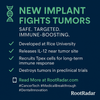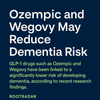As dental professionals and patients alike seek healthier alternatives to sugar, artificial sweeteners have surged in popularity. But new research suggests one of the oldest sugar substitutes—saccharin—could offer far more than cavity prevention. It may also hold the key to combating multidrug-resistant bacteria, a growing global health threat.
A recent study led by Professor McCarthy and published in EMBO Molecular Medicine has found that saccharin, commonly used in diet sodas and sugar-free products, damages bacterial cell walls, effectively killing bacteria and allowing antibiotics to penetrate more easily.
This breakthrough is particularly significant against hard-to-treat pathogens like Acinetobacter baumannii and Pseudomonas aeruginosa, both notorious for resisting conventional antibiotics.
What This Means for Dental Infection Control
For the dental community, this is more than a medical curiosity. With rising concerns about antibiotic resistance in post-surgical infections and oral biofilms, the ability of saccharin to prevent biofilm formation is noteworthy. Biofilms are one of the biggest challenges in endodontics and periodontal therapy.
Moreover, researchers have developed a hydrogel wound dressing infused with saccharin, which outperformed silver-based antimicrobial dressings. This innovation could benefit not only hospitals but also dental clinics managing surgical or post-extraction wounds.
Why It Matters for Dental eCommerce
From a dental eCommerce perspective, this research opens the door to new product lines that bridge the gap between sweeteners and clinical-grade wound care. Saccharin-based dental rinses, gels, or topical applications might become viable adjuncts to infection control.
Looking Ahead
As the World Health Organization warns of a “post-antibiotic era,” this unexpected use of an everyday sweetener could reshape how we view both nutrition and infection control. The simplicity and existing regulatory status of saccharin may accelerate product development in this space.




